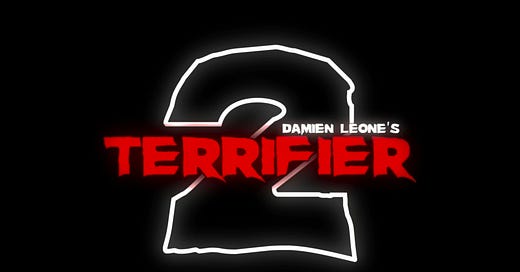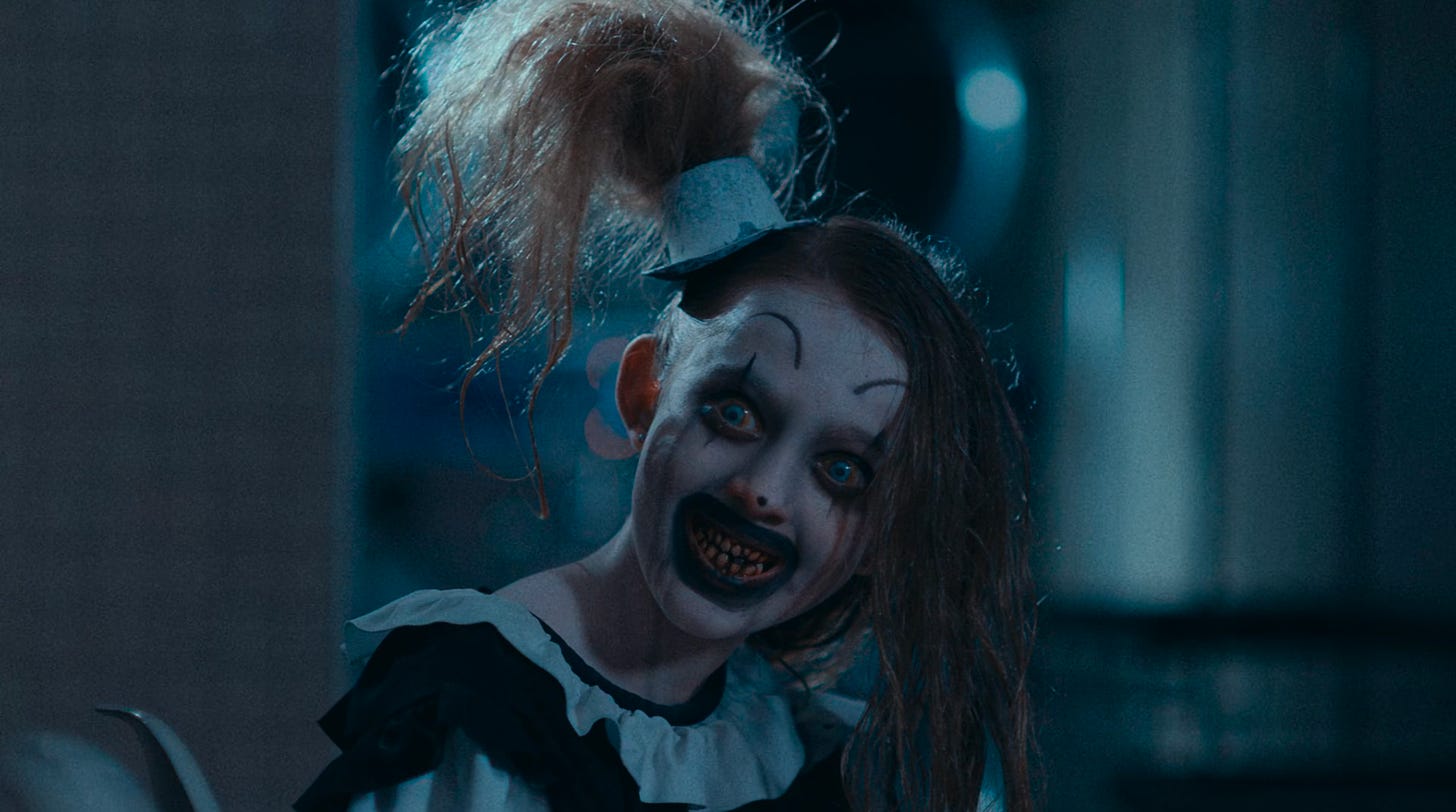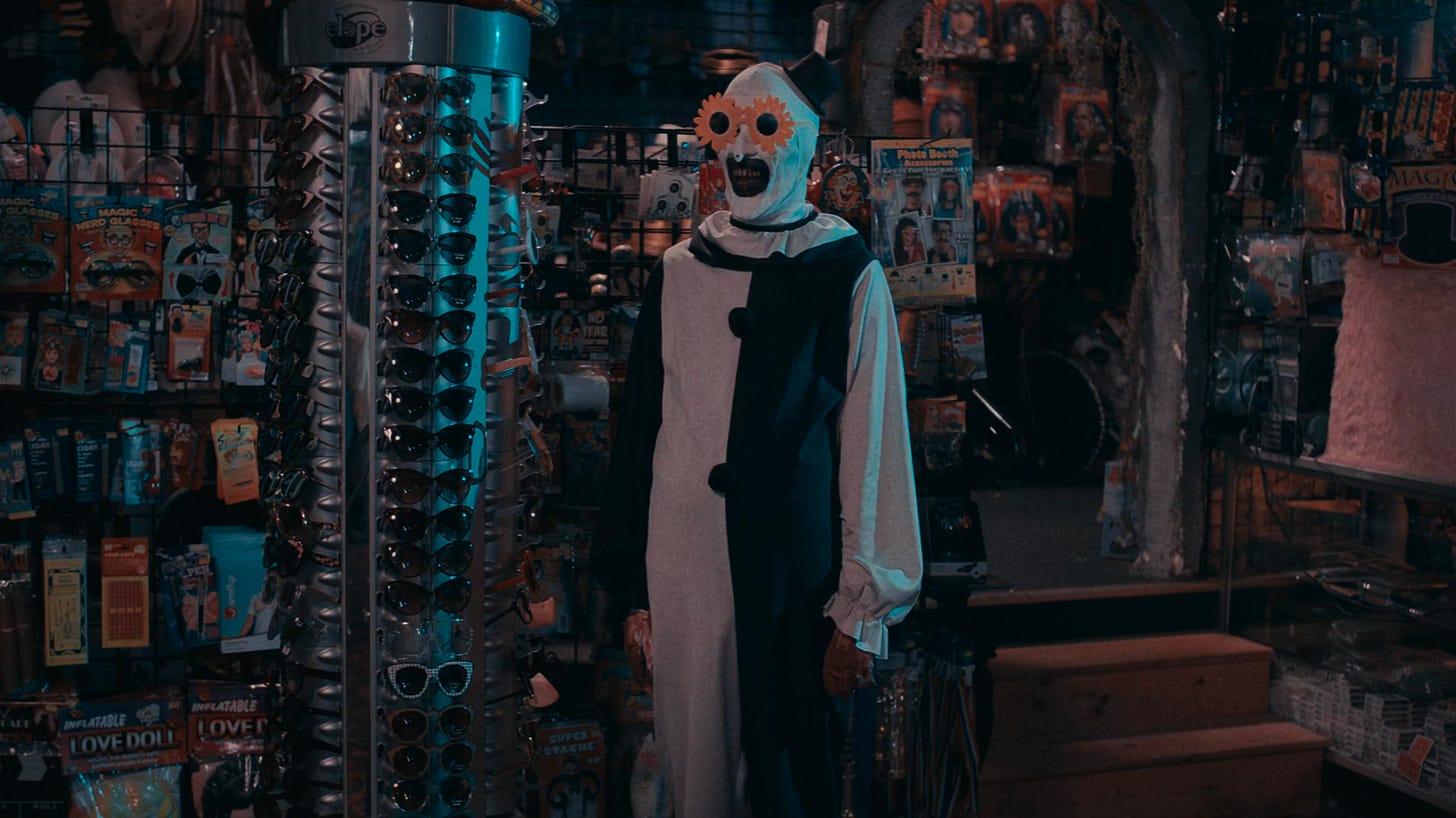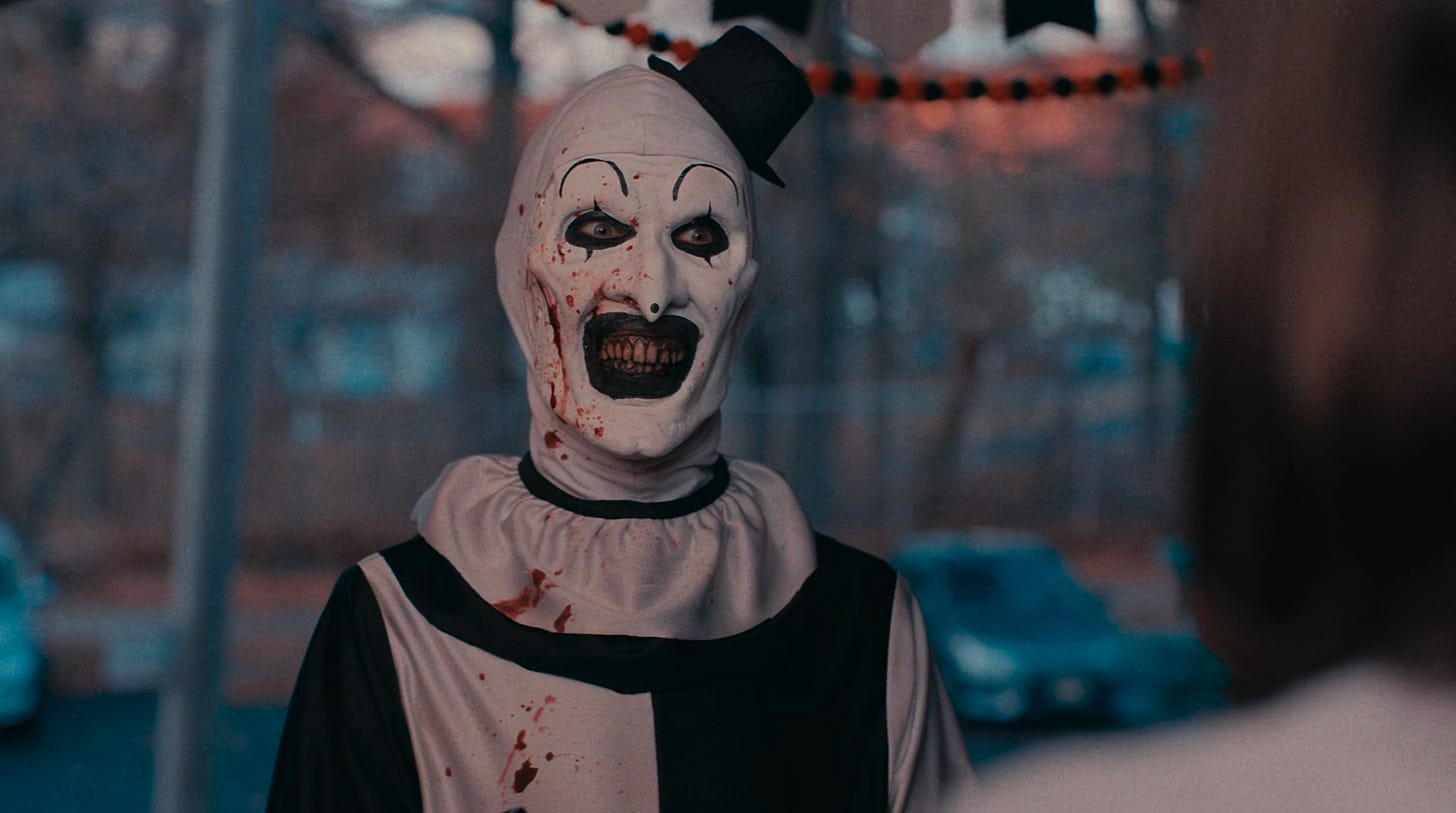Terrifier and the importance of having a memorable slasher
Art The Clown is a masterclass in constructing a slasher that stands out
Stay with me long enough and you start to notice an annoying trend. I can be an insufferable, elitist hipster when it comes to horror movies. Always the outsider, I adjusted to the weirdo lifestyle at a young age as a survival skill and as a result, I am immediately suspicious of groupthink. It bums me out. Unfortunately, a part of that suspicion is a suspicion of popular things. I’ve never been at home among the lowest common denominator. I have a hard time relating. Apply this elitism to just about any medium and you find me terribly uninterested in just about everything that a lot of people happen to like in the cultural moment. See? I’m doing it right now. This is especially true of horror, a genre that you’d think I’d be eagerly diving into headfirst at every opportunity. Fandom rubs me the wrong way sometimes and horror fandom has a tendency to uncritically consume everything out there with no regard for quality. Go to any given horror convention and you’ll see this in action. If every jabroni in black makeup and fishnet is feverishly going out of their mind about every new release, I consider it a foregone conclusion that whatever that movie is is also garbage. It sucks. It’s not fair and I’m working on being less shitty but when everyone was out there last October, losing their shit over Terrifier 2, I wasted no time relegating it to the trashbin without first spending so much as a god damn second looking at it.
I consider creepy clowns to be a lazy trope. I don’t particularly like clowns, but that has nothing to do with coulrophobia and mostly everything to do with just not getting the appeal. But the creepy thing? I lump it in there with creepy kids and haunted dolls. Evil clowns are for the Friday night theater crowd. You know what I mean? The folks eagerly forking over their hard-earned dough for the next James Wan sequel. Stephen King gets a pass for being way out front of the whole thing with It back in the 80’s and having lived on the North Shore of Massachusetts during peak evil-clown-attack season, I never saw a single creepy evil clown, so maybe I’m just pissed off and jaded. But Terrifier figured it out. I’m here to tell you that Damien Leone cracked the code and while Art The Clown doesn’t scare me and I think that calling your movie Terrifier is just a tad presumptuous, this pair of indies have managed to solve a problem that modern horror producers have been trying to figure out since the last of the formal Scream sequels: How the hell do we resurrect the slasher franchise paradigm?
Directors have tried. I offer the Hatchet movies and Laid to Rest as examples, but for all their perks and the fact that the former managed to scratch out four movies in what was undeniably a franchise, Victor Crowley just didn’t feel like a lasting quantity to me. For the same reasons that I never really connected with Leatherface, I feel like the mutant hillbilly concept doesn’t carry water. Think about it. Do you know a single person who prefers Leatherface to the typical Jason/Freddy rivalry? Do you know anyone who would even place him in their top three? In the 1980s the key to success for any horror movie was a solid monster at the heart of it. The difference between a single weekend cash in at the box office and a picture so successful that it set you up for life was a masked killer you could print on a tee shirt. The early players could afford to be simple because there was no competition yet. You could have your Jason Voorheeses and Michael Meyerses be lumbering, silent slayers. Jason had physical presence. He was always my favorite because he was more like a force of nature than anything else. The Shape was aptly named. Meyers is at his best when he’s a threatening shape in the darkness, emerging suddenly from the gloom. Later on you needed an angle that made an impression. Jason became a supernaturally unstoppable zombie. Meyers was the antichrist or something. Freddy Krueger changed the game. He needs no explanation. Chucky had Brad Douriff. But there were plenty of minor-leaguers and outright losers that never made the cut. Horace Pinker, Max Jenke, Cropsy, they either lazily aped other killers or remained completely undeveloped in the one movie afforded them by Hollywood. Bottom line, these outliers simply lacked the goods to be memorable and so did the recent attempts to recapture the magic. Art The Clown does not have this problem and the credit lies entirely in the hands of director Damien Leone and actor David Howard Thornton.
With anyone else moving things along, the first Terrifier would have been a completely forgettable experience. Its elaborate special effects are exciting for a movie practically made on pocket change but the overall film rolls off like empty calories since it notoriously lacks a story and the entire spectacle seems to orbit a single, nasty kill scene involving a hacksaw. It’s lifted out of the trash heap thanks to a nigh-impossible performance by Thornton, who I had to look up and see if he ever attended clown college. Art never makes a sound, even when he’s being stabbed or getting his eye gouged out, but it’s the mimicry of the performance that places him on the map and now I understand exactly what it was that everyone was freaking out about. The first Terrifier, while not exactly a great movie, is the memorable introduction of a new franchise killer. But a single movie does not a franchise make and it was inevitable that a sequel came along.
Terrifier 2 improves on the formula exponentially. Art The Clown remains in place as the keystone feature but the world that the movie exists in expands to feel like a living location (Queens, maybe?) where the previous film felt like it took place in a bottle. We get a proper final girl, a cast worth giving a shit about, and a crisis that feels a little more real. It’s a solid foundation to launch a proper franchise from and given the popularity of Terrifier 2, it should come as no surprise that you can’t stop the clown and he’ll be back for another round. I’ll be there when he shows up. Leone has baited a hook that is terribly frustrating to watch at times. Given how long it took to make a sequel, proper, having to wait for the next one seems cruel.
The secret to Terrifier’s success lies in the analytical nature in the way that Leone and Thornton went about turning Art The Clown into something memorable. In times past and more recent attempts to bring the slasher back to life the method of creating a killer took place strictly on the pages of the script. Slap a mask on the killer, shoot your movie and if enough people liked it, you could work out a couple more movies. There was nothing fascinating about them, though. Chromeskull and Victor Crowley both felt to me like the more forgettable slashers in the one-off cash-ins like The Prowler and My Bloody Valentine. In the laziest of cases, you drag up the Ghostface Killer and hang your wager entirely on the nostalgia of the previous generation to sail the all-new, all-different version of your franchise to box office success. Art The Clown works through a combined effort of a director’s singular vision, looking at what worked for filmmakers in the past and hitching that up to an idea that we haven’t seen before. Leone asks what Freddy Krueger would be like if he was also The Joker. He combines the notion of the cruel, quippy slasher with the silent killing machine and what you get is a silent killing machine that quips and terrorizes through expression of face and body language. I’m actually kind of amazed. The way Thornton brings Art The Clown to life on the screen defied my expectations. Having only seen the two Terrifier movies and none of the short film demos that Leone used to hash out the character’s earlier iterations, I wonder if there was ever a version of Art that spoke, even in unused script drafts, because that would have sucked.
Terrifier is definitely going to grow into a new and memorable franchise and I look forward to more of them, even if they keep the insane mean streak that the title is known for. Aspiring filmmakers take note. Damien Leone is the one to watch.








